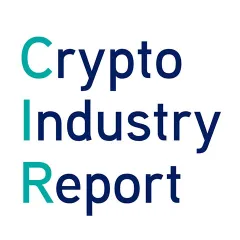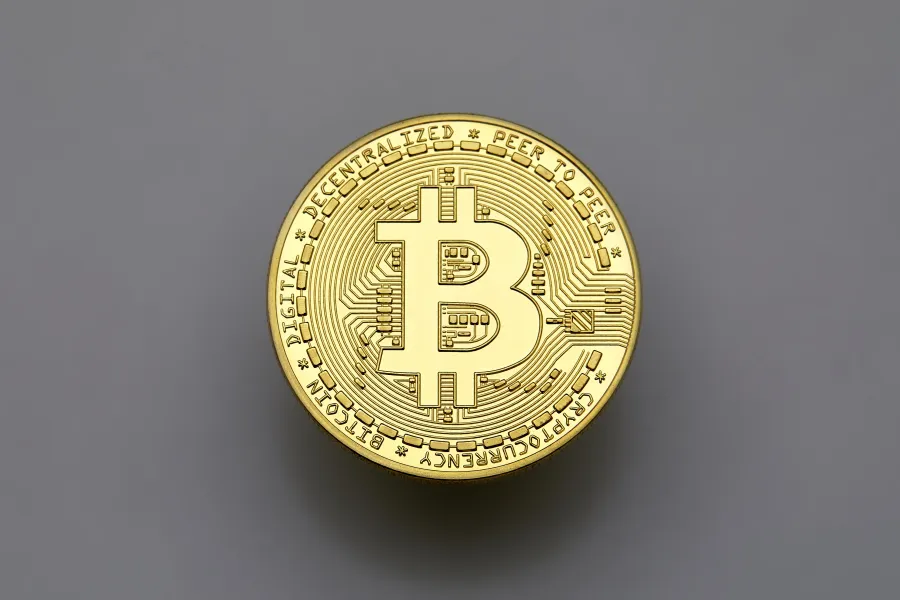UST collapse: Deathblow for algorithmic stablecoins?
This week, our blockchain experts assessed the following topics:
- UST collapse: Deathblow for algorithmic stablecoins?
- Decentralised Finance still has the potential to eat finance
- Bitcoin adoption: a tug war between nation-states
- CBDCs: Are they coming yet?
Our bi-weekly Crypto Industry Report provides you with valuable information on the global crypto industry – picked and analysed by our blockchain experts.
UST collapse: Deathblow for algorithmic stablecoins?
In an epic but tragic demise, algorithmic stablecoin TerraUSD lost its pegging. This sent LUNA onto a death spiral to zero dragging down the entire Terra Luna ecosystem with it. More than $60 billion in market capitalisation was wiped out in a few days as other ecosystem protocols went belly-up with UST and Luna.
Critics have been warning about a potential UST implosion for months. As many different algorithmic stablecoins like Nubits, Titan, or Empty Set Dollar have lost their peg before, a sudden failure of UST could not be ruled out once its US peg would come under pressure. And this is indeed what happened. After an initial de-pegging on May 7th, the peg briefly returned to a one-to-one ratio the following day. However, trust was shaken. As early as May 9th, the de-pegging resumed, and UST fell as low as $0.60. At one point, UST’s sell-off was so strong that Binance’s order book was emptied out completely. Ultimately, the fate of Luna and UST was sealed, when UST’s market cap fell below that of Luna, indicating that not all UST holders would be able to exit the system through its in-built mint and burn mechanism.
As a consequence, UST went as low as $0.10 while Luna’s token supply hyper-inflated to over 6.5 trillion coins owing to the relationship between Luna and UST. To potentially restore the Terra ecosystem and preserve its community, Do Kwon, the co-founder and CEO of Terraform Labs, proposed a revival plan that would create 1 billion tokens to be distributed among various community stakeholders. It’s yet to be seen, whether or not this effort will succeed. This last attempt comes after the Luna Foundation Guard (LFG) sold more than 80,000 BTC to support UST without achieving the intended effect.
When it comes to algorithmic stablecoins, it will be interesting to see if their narrative has lost steam. Interestingly enough, other ecosystems inspired by Terra have launched their own algorithmic stablecoin. These include USN by Near, USDN by Wave, or USDD by Tron. While USDN was already on the brink of extinction in April after losing its dollar peg and USN is currently trading below its peg, the sustainability of USDD is being questioned. Meanwhile, Justin Sun – the founder of Tron – does not see any issues for the time being. Taking advantage of the Luna fiasco, he announced that USDD mining had just gone live offering returns of up to 40%: And indeed, since its launch two weeks ago, the stablecoin has already raked in more than $300 million in assets.
Decentralised Finance still has the potential to eat finance
It’s a trough of disillusionment that DeFi is currently going through. Be it beaten-down token valuations, failing decentralised stablecoins or DeFi hacks that amount to $1.57 billion in the first four months of 2022, a number that surpasses the amount hacked in all of 2021, the prospects of decentralised finance do look rather grim at the moment. And with these problems ensuing, tougher nation-state regulation is most likely on the horizon.
However, to abandon DeFi would be throwing the baby out with the bathwater. In 2013, Marc Andreessen famously wrote that software will eat the world and DeFi is surely the latest iteration of this. After all, there is a lot of overhang cost in finance that can be eaten away by more efficient software protocols implemented as smart contracts on public blockchains: McKinsey estimates that financial intermediaries annually accrue $5.5 trillion in revenue. From the perspective of users, this is a $5.5 trillion operating expense that can be eaten away. After all, today’s financial system’s margin is DeFi’s opportunity.
As a matter of fact, it seems inevitable that the internet will have a decentralised financial backbone to match its distributed communication channels. And existing institutions will tap into this new financial system as operating costs to do so will be less than keeping decades-old, siloed IT infrastructures up-to-date. A big driver will also be the developments in the field of zero-knowledge technology. They will allow companies to leverage public blockchains while preserving details of sensitive data and information.
Bitcoin adoption: a tug war between nation-states
Bitcoin nation-state adoption remains a big topic. Only recently, about 44 countries met in El Salvador to talk and strategise about all things regarding financial inclusion. The meeting was organised by the Alliance for Financial Inclusion (AFI).
El Salvador’s president Nayib Bukele took the opportunity to tweet that discussions will revolve around general topics like financial inclusion and banking the unbanked but also include Bitcoin and its benefit for his Latin-American country. While Bitcoiners were quick to celebrate this, others dampened expectations by stating that state officials and central bankers are not particularly interested in what’s been happening with Bitcoin but were invited to El Salvador because it was the country’s turn to receive them according to the AFI calendar.
Be that as it may, adopting Bitcoin within a country is no easy task after all. A few days ago, Argentina’s biggest bank, Banco Galicia, added crypto trading, only to see this effort thwarted by the central bank of Argentina, which banned crypto assets within the banking system shortly after. Rumours have it that the IMF’s pressure was behind this move. And even in crypto-friendlier jurisdictions, it is difficult to sway regulation in favour of cryptocurrencies. In South Korea, the recently elected president Yoon Suk-yeol has won the presidency by promising to improve tax policies for crypto investments. Two months after having taken office, he is still encountering some resistance to follow through on his promises.
Furthermore, from the perspective of crypto investors, bad news is also coming out of Portugal. The country is deemed a tax haven for crypto asset holders because there is no capital gains tax on the asset class. But now, officials have announced that they will be changing course and imposing taxes on the exchange and sale of cryptocurrencies in the near future.
CBDCs: Are they coming yet?
“Gaining momentum” – that is the title of a recent working paper by the Bank for International Settlements (BIS). In the paper, the central bank of central banks as the BIS is colloquially called stated that more than half of all the world’s central banks are either developing or running experiments on CBDCs. Even more impressive seems to be that 9 out of 10 central banks are actively researching this new form of digital currency.
When it comes to developing economies, reasons to pursue central bank digital currencies are mainly driven by financial inclusion. As CBDCs are digital and can be constructed in a retail fashion, financial experts are looking at them to potentially provide a more efficient way to let people – most prominently the unbanked – participate in the economy.
Among Western, more developed nations, two reasons are brought forth to justify current research efforts: For one thing, cash is on its retreat. This is best indicated by the Nordic country of Sweden, where cash usage has decreased significantly. According to Sweden’s central bank, the percentage of Swedish people using cash had fallen from 39% to 9% during the last ten years. Hence, launching a retail CBDC would mean cash would be made digital and thus more practical in today’s cyber age, potentially making its usage more attractive again.
Another reason for CBDC adoption is the rise of privately issued stablecoins. They have experienced great success over the last years. Nonetheless, stablecoins have private issuers and many of them are still residing outside the official banking sector. By issuing a CBDC, central banks could provide for digital versions of their respective fiat currency and take stablecoins’ place making sure digital currencies remain within the purview of the established banking industry.
Yet, the main question still is: When will CBDCs launch on a larger scale? As of today, a few minor CBDCs are live in the Bahamas or Nigeria. According to the IMF though, the Sand Dollar in the Bahamas is still struggling to gain traction with accounting for less than 0.1% of currency in circulation on the island. The Banco Central de Chile (BCC), one of those central banks that was closest to launching a CBDC soon just announced to prolong its plans to issue its digital currency. Notable is that the ECB expects its CBDC prototype to go live sometime in late-2023.
Share post

Auch interessant

To be continued: SEC pushes back at Coinbase
SEC pushes back against Coinbase's claim of no regulatory jurisdiction, stating the crypto exchange knowingly violated securities laws. Meanwhile, Gemini, owned by the Winklevoss twins, files a lawsuit against Digital Currency Group and CEO Barry Silbert alleging fraud and deception following the collapse of a lending venture. The Bank for International Settlements survey reveals that 93% of central banks are working on Central Bank Digital Currencies (CBDCs) which are seen as potential geopolitical policy tools and a challenge to the dollar's dominance. The race for a Bitcoin ETF intensifies, with BlackRock refiling its application featuring Coinbase as the market surveillance partner, as the Grayscale Bitcoin Trust's discount to net asset value narrows, potentially indicating the transformation into a proper ETF.

BlackRock fever: The ETF filing spree and institutional appetite
BlackRock filed for a Bitcoin ETF with the SEC, inspiring similar applications from firms like WisdomTree, Invesco, and Fidelity, and boosting Bitcoin's value. Traditional finance institutions such as Fidelity and Nasdaq are showing increased interest in crypto, with moves towards exchange and custody services. The defunct crypto exchange FTX, under new CEO John Ray III, is planning a potential revival after recovering significant assets. Meanwhile, the IMF is developing a global CBDC platform for cross-border transactions and DAI, a major stablecoin, is diversifying its backing from USDC to include real-world assets.

SWIFT explores blockchain interoperability
SWIFT has partnered with Chainlink to experiment with leveraging its infrastructure for transferring tokenized value across blockchain networks. The trials will address interoperability, regulatory challenges, and operational drawbacks for financial institutions in a blockchain environment. Chainlink will provide connectivity between private and public blockchains. SWIFT's findings will be published later this year.

China wants an Internet 3.0, while Hong Kong gears up for crypto trading launch
China is striving for advancement in Internet 3.0 technologies, with Beijing's white paper outlining plans to invest in the development of the metaverse and Web3 tech such as non-fungible tokens, but not cryptocurrencies due to the country's previous ban. Meanwhile, Hong Kong is launching its new crypto trading regulations, allowing retail investors to participate from June 1, 2023, with exchanges like Huobi Hong Kong beginning to offer spot trading to retail and institutional clients. Furthermore, the Cybersecurity and Technology Crime Bureau of the Hong Kong Police Force is launching a metaverse platform, 'CyberDefender', to educate the public about potential threats and crime prevention in the metaverse.

BRC-20: Innovating on Bitcoin is the new cool
A new Bitcoin “token standard” called BRC-20 is the hottest thing right now in the crypto space. It was introduced in March 2023 by a pseudonymous person called Domo. Bitcoin Request for Comment 20 (BRC-20) is an experiment that brings fungible tokens to the Bitcoin blockchain using the Ordinals protocol. Ordinals rely on ordinal theory, enabling the identification and tracking of individual satoshis within Bitcoin's existing supply, while also allowing them to be inscribed (associated) with data. Through this technique, satoshis (sats) are given ordinal numbers starting with zero. Anyone can add a script file to a sat to create and transfer a BRC-20 token on the Bitcoin blockchain. BRC-20 tokens are created using three functions: deploy, mint, and transfer.

US versus EU: Giants fighting for regulatory clarity
It is official now: The European Parliament voted overwhelmingly in favour of Markets in Crypto Assets (MiCA), legislation that will guide the crypto sector in all 27 European Union member states. 517 parliament members voted for it, while 38 voted against it. This approval makes Europe the first continent with comprehensive rules for cryptocurrencies. Also, it means that all EU member states will have unified crypto regulations. So, if a crypto business is approved in one EU member country, it could easily expand operations to another member state. The EU’s milestone was lauded by Binance as well as Kraken and Coinbase.

Ethereum: Another milestone reached with the Shanghai Update
On April 12, 2023, Ethereum successfully executed the planned Shanghai update also known as Shapella. The upgrade allows validators to unstake their staked ETH and withdraw their rewards, as well as staked ether if chosen. Now that another level of uncertainty has waned for the biggest smart contract blockchain, this new feature could attract more investors to stake their ether.

CFTC versus Binance:
Clash of the titans
The world’s leading crypto exchange by volume, Binance, alongside its CEO, Changpeng Zhao, and ex-Chief Compliance Officer, Samuel Lim, are being sued by the US Commodity Futures Trading Commission (CFTC).

Stablecoin USDC briefly lost its
peg. What do we learn from this?
One of the top stablecoins by market cap, USD Coin (USDC), de-pegged briefly from the US dollar on March 11 following the collapse of Silicon Valley Bank (SVB). Circle, the stablecoin’s issuer, held $3.3 billion in USDC reserves with the bank, which caused panic as investors rushed to withdraw their funds, assuming USDC could implode because of insufficient backing. However, the amount represented less than 8% of the stablecoin’s reserves.

Ethereum Shanghai upgrade pushed to April: Will there be too much selling pressure?
Ethereum stakers have been eagerly awaiting the Shanghai upgrade, which will enable them to withdraw their staked ether. Stakers’ funds have been locked since Ethereum introduced the proof-of-stake Beacon Chain in December 2020. The upgrade was originally slated to take place sometime in March but was pushed by about two weeks to April during a recent execution layer meeting.